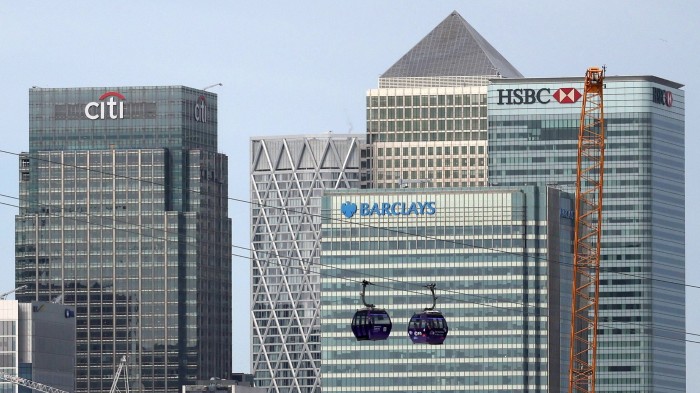Stay informed with free updates
Simply sign up to the UK financial regulation myFT Digest — delivered directly to your inbox.
The Bank of England is exploring ways to relax ringfencing rules that force UK lenders to separate their retail operations from other activities, as it aims to head off calls to scrap the regime entirely.
Sam Woods, head of the BoE’s Prudential Regulation Authority, has told staff supervising the banking sector to draw up options for diluting the ringfencing rules without losing the core protection they provide for retail deposits, according to people briefed on the work.
Regulators are examining two main areas for potential changes: the rules preventing banks from doing riskier activities inside the ringfence, and the limitations on how they structure back-office services such as IT support, human resources and regulatory compliance.
The regulations, which came into force in 2019, were introduced to avoid a repeat of the taxpayer bailouts of failing lenders that followed the 2008 financial crisis. Bank bosses have stepped up pressure on the government to wind back the more onerous parts of the scheme.
The ringfencing regime aims to structurally protect deposits from retail consumers and small businesses by requiring big British banks to separate them inside legal entities with higher levels of capital and restricted activities.
The rules prevent banks using money from British retail depositors to fund complex and risky activities, such as financing hedge funds, trading in complex derivatives or lending to companies in riskier countries such as China.
Currently, UK deposit-taking entities are prevented from relying on the rest of the group for essential services — unless these come from a standalone entity — in order to allow a ringfenced bank to continue operating smoothly if another part of the group is engulfed in a crisis.
Officials at the PRA are considering whether to change the rules to allow more services to be provided from outside the ringfence, which applies to any UK bank with at least £35bn of retail deposits.
This could ease concerns of some UK digital banks, such as those set up by US lenders JPMorgan Chase and Goldman Sachs, which worry they are growing so quickly they will soon have to undergo a costly ringfencing of their British retail deposits.
However, it would do little to help banks such as Barclays and HSBC, which have already set up standalone companies known as “servcos” to provide back-office services to their businesses on either side of the ringfence.
Ringfenced banks are also prevented from offering their customers certain riskier types of derivatives, as well as from trading commodities, investing in financial markets using their own funds, or taking on exposure to many other financial institutions.
These prohibited activities are written in law, so changing them would require the government to pass secondary legislation. The PRA is working with Treasury officials on potential adjustments and could suggest such options to the government in a letter.
The debate about ringfencing is intensifying ahead of the chancellor Rachel Reeves’ Mansion House speech in July, when she plans to present a new strategy for boosting growth and competitiveness in British financial services.

The heads of four of Britain’s biggest banks — HSBC, Lloyds Banking Group, NatWest and Santander UK — sent a letter to Reeves last month calling on her to scrap the ringfence as part of the new plans.
“Removing the ringfencing regime is, we believe, among the most significant steps the government could take to ensure the prudential framework maximises the banking sector’s ability to support UK businesses and promote economic growth,” the letter said.
The push to remove the ringfence is not universally supported, however. Barclays chief executive CS Venkatakrishnan refused to sign the letter and said last month: “Ringfencing helps protect depositors by segregating the liabilities and the assets and makes it easier to make depositors whole. I go on the side of depositor protection.”
MPs are expected to grill executives from the big banks on the issue when they appear before parliament’s Treasury select committee on Tuesday.
Woods is seen by bank executives as an obstacle to scrapping the ringfencing regime, as he was secretary to the Independent Commission on Banking that recommended the introduction of such rules in its landmark 2011 report. But he is due to step down in just over a year when his second five-year term as head of the PRA ends in June 2026.
The PRA chief’s move to draw up options for easing the rules is designed to deflect calls to ditch the entire regime, which costs UK banks an aggregate £1.5bn a year, according to a review led by Sir Keith Skeoch in 2022. The PRA declined to comment.
The Treasury said: “The banking sector is critical to delivering our number one priority of economic growth. That’s why the chancellor has set out a new approach to regulation that supports growth, instead of excessively focusing on risk, and why we are co-designing the first-ever financial services growth and competitiveness strategy with industry.”




